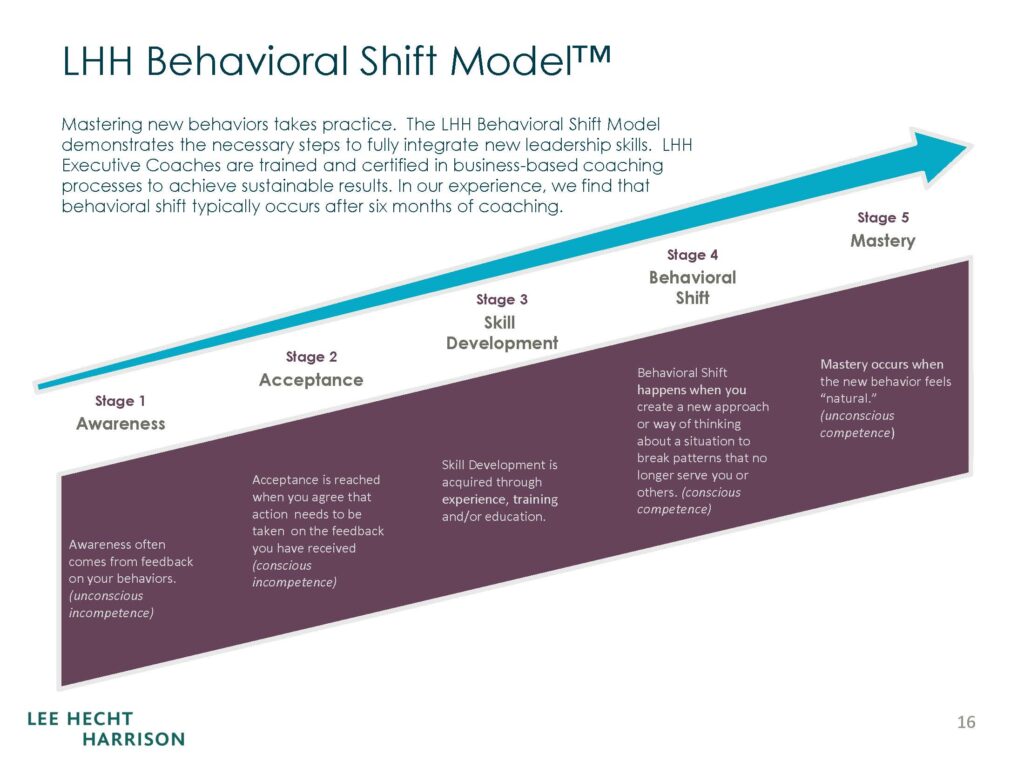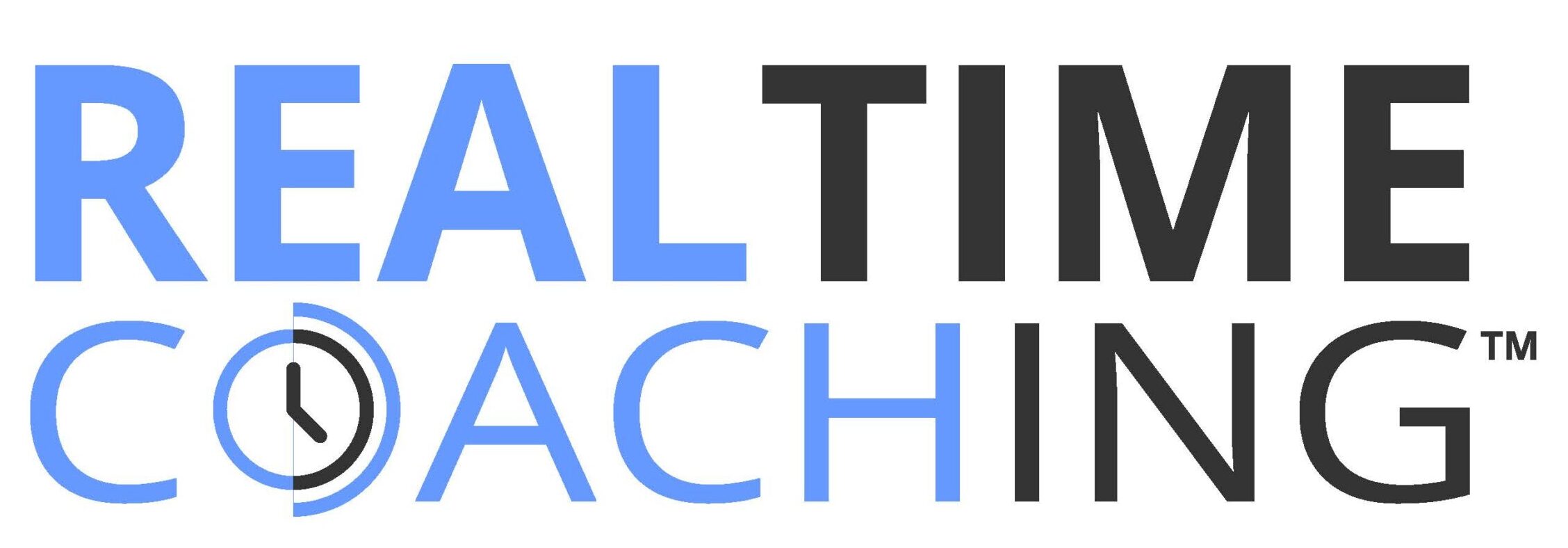RealTime Coaching (RTC) will positively affect an organization’s culture and multiply it’s effectiveness with it’s simple, practical approach to communicating with others.
“RealTime” means issues are handled in RealTime – now, in the present. Realtime cultures invest the majority of time working on the now with a focus on the present and the future. RealTime spends very little time on the past. RealTime learns from the past, bud doesn’t dwell in the past.
“Coaching” is our word for the process of getting you from where you are today to where you want to go.
Implementing a new approach to communicating with each other is hard. It will take some time and effort. Getting where you want is not luck. There’s a process for making positive changes RTC uses from Lee Hecht Harrison called the behavioral shift.

The shift takes place through 5 stages.
Stage 1: Awareness. Awareness often comes from feedback. Sometimes, the feedback is minimal and doesn’t make an impact. If you keep getting feedback, at some point, there will be a tipping point when it’s time to do something different. How do you know if you’ve reached the tipping point? Imagine a balance scale.

On one side of the scale is “What you want” and on the other side of the scale is “What you think you’re getting”. When those are in balance, a shift is not needed because you’re getting what you want. However, when the scales are out of balance enough to reach the tipping point, it’s time to do something different.
Here’s an example: What I want: An organization where we work collaboratively on challenges and opportunities and we treat each other with respect while being able to give our honest opinion on ideas. What I’m getting: An organization where some people just give orders, others enable bad behavior, there’s no accountability, no creativity, and no new ideas for fear of repercussions. At what point are you willing to take action to get you what you want?
Stage 2: Acceptance. Acceptance occurs when you agree that action needs to be taken on the feedback you have received. Warning: While you may be ready to do something different and have acceptance, others may not be on board. There are five individual levels of acceptance from 1-5. Suffice it to say, you must first be ready and wanting to make a shift (these are levels 3, 4 or 5) before you will actually do it. Acceptance levels 1 and 2 will argue, find excuses, and be defensive about making the change. Can you think of anyone on your team or in your organization who fusses about change?
You can find more on the levels of acceptance here: If they don’t care, don’t waste your time.
Stage 3: Skill Development. Skill development is acquired through experience, training, and education. This is where you learn the new skills. For instance, if you wanted to learn how to play golf, you wouldn’t go play a pro on your first day. Similarly, if you want to build a RealTime coaching culture, you will need to train on the language, the questions, practice RealTime scenarios, and allow time for the skills to develop. You will need practice before “taking it from your seat to the street”.
Stage 4: Behavioral Shift. At some point, after some amount of skill development and practice, you will make a shift. It’s “exciting” when it happens. Others who work closely with you may tilt their head, they will notice you trying something different, a new approach, a 2.0, an upgrade. It will feel new, different, awkward, klunky, etc…This is why this stage is described as “conscious competence”. You are aware you’re trying something new, but it’s not natural. Here’s a very simple example: Starting meetings on time. If you have become known for starting meetings late, make a commitment to start your next meeting on time and watch your attendees’ reactions.
Stage 5: Mastery. Mastery occurs when the new behavior feels natural. It’s no longer you trying something different, it’s just part of what you do. Once you have been starting meetings on time, it will evolve from “the new you” to “just a meeting”. Once you reach mastery, don’t let your guard down as you will notice this model slopes upward, meaning it’s easy to slip back down and go back to your old ways of doing things.
Positive change is not based on luck, use the shift model when implementing new behaviors to help keep you, your team, and your organization on track.
To implement RealTime Coaching within your organization, contact Ryan Lisk. [email protected]
